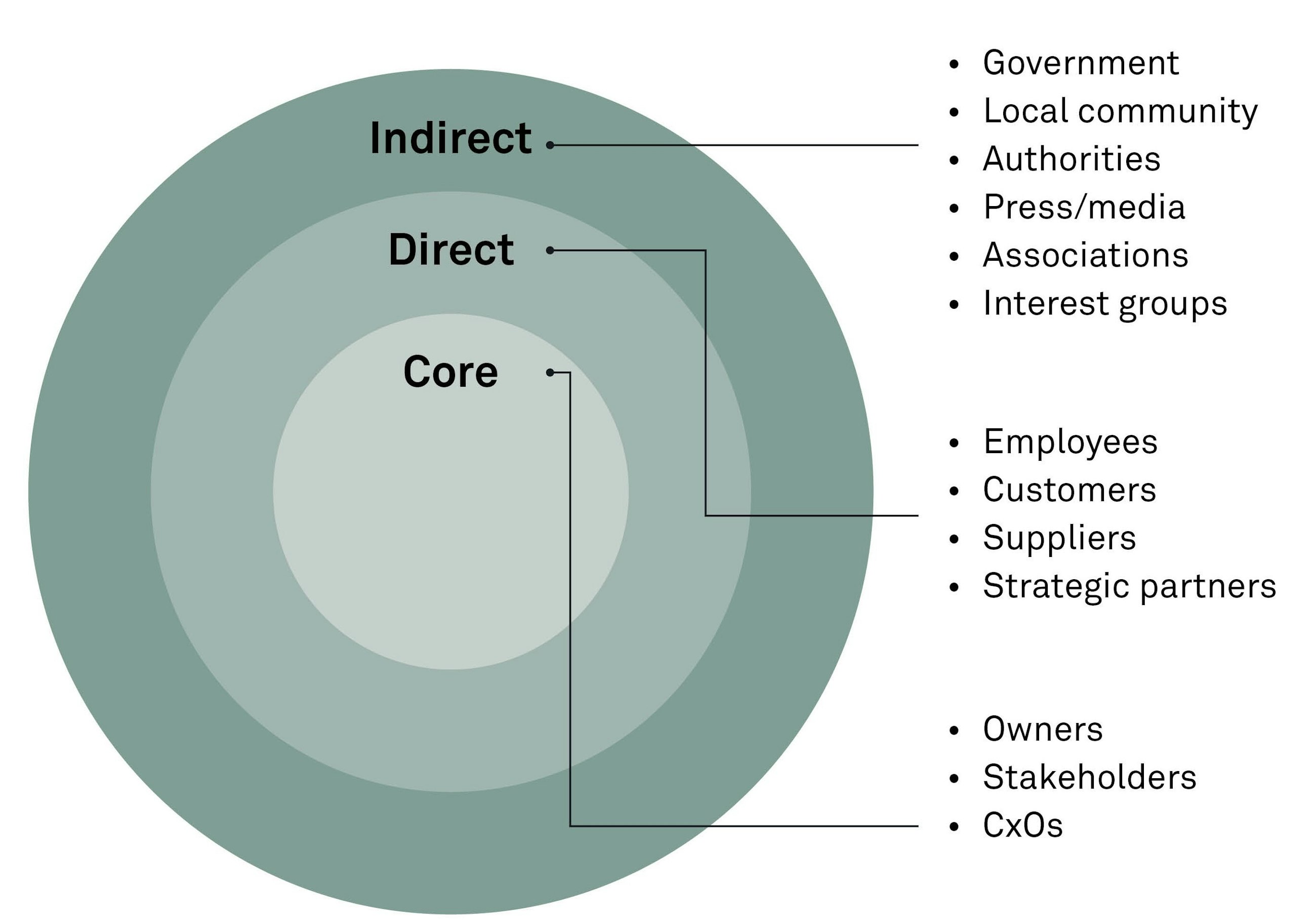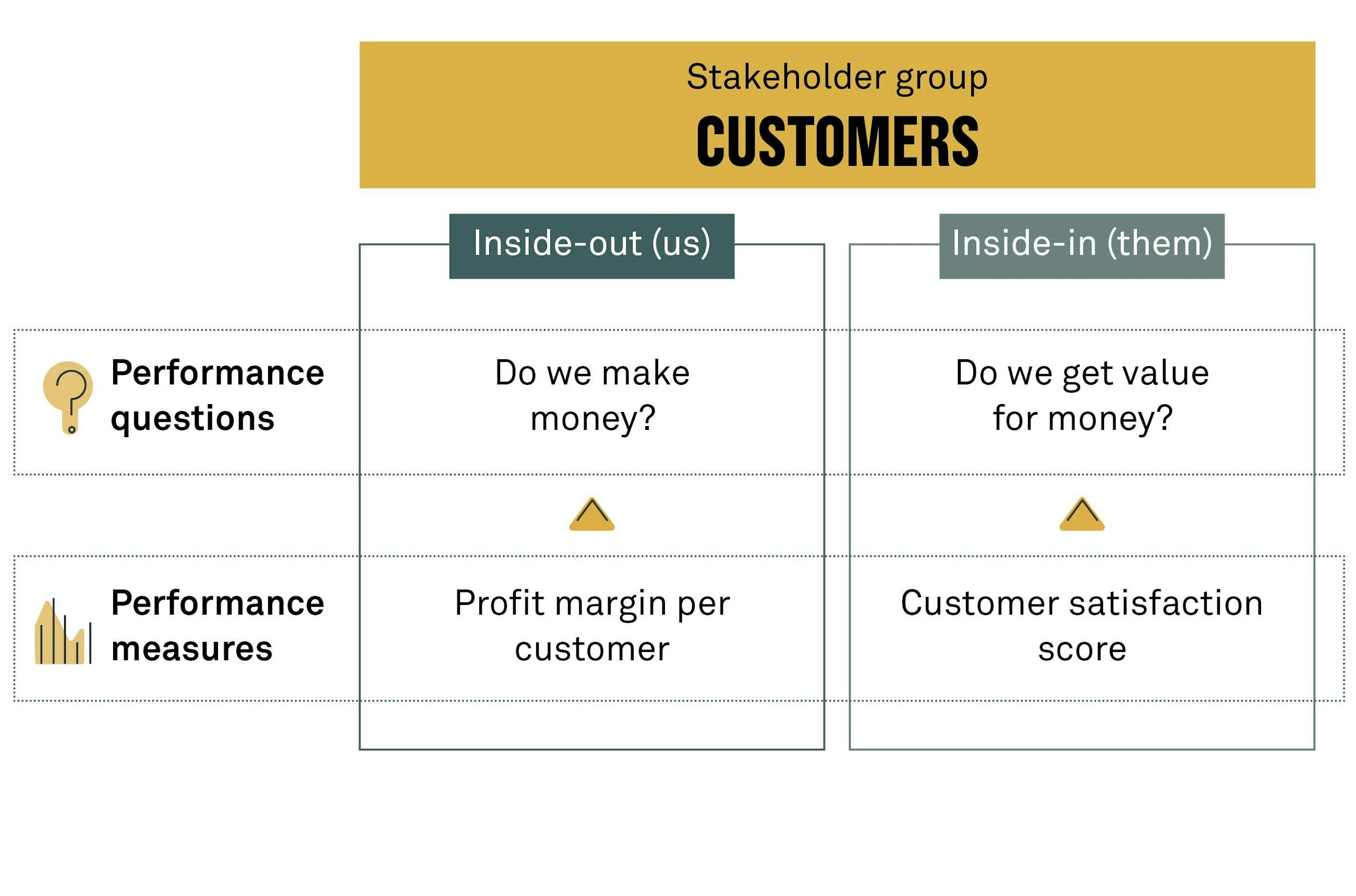Battling the blind spot of performance management by including a stakeholder perspective
7 August 2020
A proper performance management system should be holistic and encompass a wide range of business activities to provide a nuanced overview of how the business is running. To review the reach of your organisation’s performance metrics, follow these three simple steps.
Step 1: Map the organisation’s stakeholders
All organisations rely on collaboration and interaction with key stakeholder groups. Establishing a stakeholder map and outlining the characteristics of each stakeholder group as well as the nature of the relationship allows an organisation to understand its operational landscape.
Step 2: Map performance metrics to stakeholder groups
For each key performance indicator (KPI) in the organisation’s performance management system, determine what stakeholder groups it relates to. Use a table like the one shown below.
When the table has been filled in, sum the number of KPIs relating to each stakeholder group and consider the following:
- Are any stakeholders not represented in the current performance metrics? Should they be?
- Are the KPIs evenly distributed across our stakeholder groups? Should they be?
- Are any of our stakeholder groups represented by multiple KPIs? If so, are any of the KPIs substitutes, i.e. do they measure the same thing?
- Are the KPIs reflecting the critical aspects of each stakeholder relationship?
Answering these questions should give you a good indication of the extent to which the performance management setup covers the entire range of your organisation’s business activities.
Step 3: Identify the point of view of your performance metrics
When evaluating a stakeholder relationship, there is essentially two basic approaches:
- Inside-out: what is in it for us (the business)?
- Outside-in: what is in it for them (the stakeholder group)?
For each stakeholder group, ask yourself:
- Related to this relationship, what is considered high performance by our organisation?
- Related to this relationship, what is considered high performance by the stakeholder group?
After successfully answering these two performance questions, you should be able to see if your current KPI has an inside-out or outside-in perspective. You should also be able to define alternative performance measures for each perspective. Despite reflecting the same relationship, KPIs related to each aspect – inside-out or outside-in – tend to differ quite a bit.
As an example, let us review an organisation’s relationship with its customers. The organisation might consider performance in terms of customer profitability. On the other hand, the customers might consider performance in terms of value for money. Consequently, to gauge performance related to the customers as a stakeholder group, potential performance indicators include either “average profit margin per customer” or “customer satisfaction score”. What the right one is depends on what aspect of the stakeholder relationship you want to focus on.
Organisations tend to focus on the inside-out perspective when defining KPIs. After all, it is a human inclination to focus on our self-interests. However, neglecting the outside-in perspective creates a blind spot on important performance-related information. Thus, for each performance measure, ask yourself:
- What perspective does this performance measure reflect – the organisation’s or the stakeholder groups’?
- What would be a proper performance measure from the opposite perspective?
Working your way through these three steps should yield critical information about your performance management setup and outline how holistic it really is from a stakeholder point of view.







